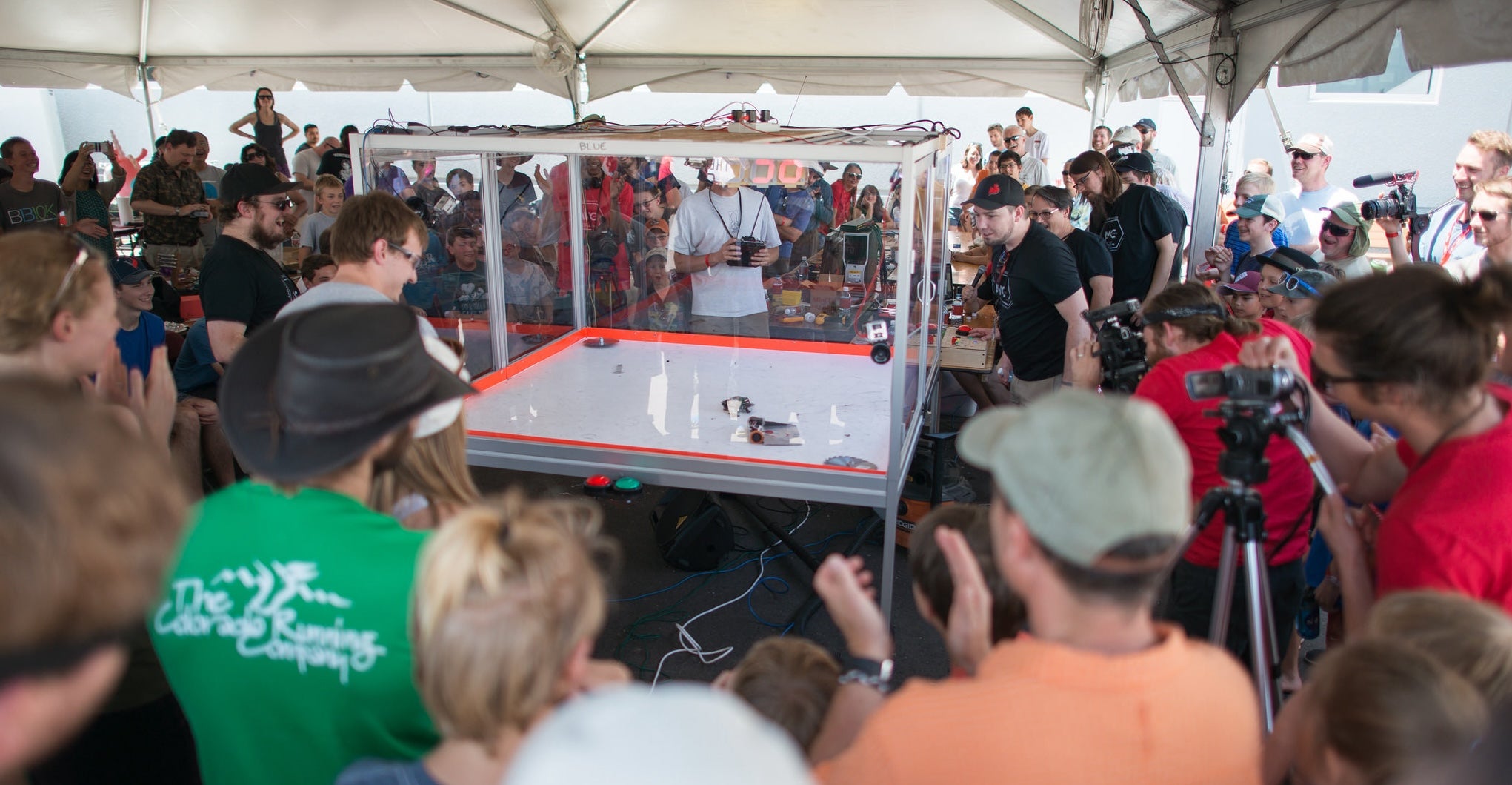Ready to build your own?
You've watched the show and streamed all the live events, but nothing satisfies the thirst for robot carnage quite like competing your own bot! Now that you're ready to take the next step, we're here to help get you started. Just like any sport or hobby, there are lots of ways to dive into the world of combat robots. And with multiple weight classes to choose from, it's easy to get overwhelmed and not know where to begin. We will cover the most common weight classes, the merits of getting a kit and building from scratch, where to get parts, and going to your first event.
But First: Safety
Before you solder your first wire or bolt your robot's frame, let's talk about safety—the most crucial aspect of robot combat. Building and operating combat robots involves inherent risks, which makes safety paramount. From proper workshop practices to the handling of high-energy batteries, we stress the importance of a cautious approach at all stages of robot creation, testing, and competition. Let’s cover the basics:
Parental Guidance Disclaimer
All minors should engage in robot building and testing under strict adult supervision to ensure safety and compliance with all guidelines and safety measures. Play it safe if you’re unsure, and have a parent, guardian, or other trusted adult supervision supervise and take on any tasks that are unsafe.
Dress Appropriately
Before you even pick up your first tool, it’s important to make sure you’re dressed properly for the tasks at hand. Long or loose-fitting clothing, jewelry, and long hair are easily caught by power tools and the robot itself. Protecting against accidents by tying up long hair, rolling back sleeves, and avoiding all loose clothes or hanging jewelry will reduce the risk of getting caught and hurt by the robot, or the tools you're using to build it.
Wear Personal Protective Equipment (PPE)
Appropriate PPE is paramount to all parts of the combat robot build process. Wearing safety goggles, protective gloves or clothing when appropriate, masks or respirators, and hearing protection are all essential to guard against accidents. Make sure to work in a well-ventilated environment when soldering, welding, grinding, or painting, and wear masks or respirators to ensure you don’t breath in any harmful chemicals or particulates looming in the air.
Tools and Handling
Familiarize yourself with your tools. Respect their power, use them correctly, and never disable their safety features.
Battery Safety
Lithium Polymer (LiPo) batteries are the most common you’ll see in robot combat. They pack a punch but need careful handling and storage. Charge and store them in fire-resistant containers and never leave them charging unattended.
Testing Safety
The only truly safe place to test a combat robot’s full capabilities is within a purpose-built arena. Even driving around in your kitchen without a weapon powered can lead to personal injury or damage to property. Make sure the arena is robust, secure, capable of containing the weight class and energy level of your robot, and designed to handle the specific risks associated with testing combat robots (ie: smoke evacuation systems, zero panel gaps for debris to escape through, new and undamaged polycarbonate panels appropriately sized for the weight classes competing inside).
Step 1: Find an Event

One of the best ways to get involved is going to your first event as a spectator. Attending your first competition without the stress of competing is a great way to get your feet wet, meet builders that might be local to you, and get a first-hand glimpse at what events are like. They're loud, they're chaotic, and they're some of the most fun you can have on a Saturday afternoon!
North America has two main websites for finding your local competitions: Builders Database and Robot Combat Events.


